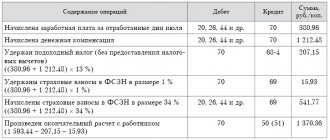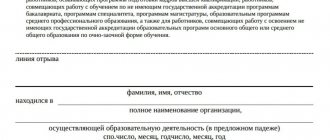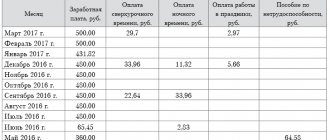Additional leaves and the procedure for their provision
Any employee with whom an employment contract has been concluded (Article 21, 114 of the Labor Code of the Russian Federation) has the right to annual basic paid leave.
As a general rule, the duration of the annual basic paid leave is 28 calendar days (Article 115 of the Labor Code of the Russian Federation). True, there are exceptions to this rule: certain categories of workers are entitled to extended basic leave (Article 115 of the Labor Code of the Russian Federation). For example, teachers belong to this category.
An employee can apply for annual leave for the first year of work after six months of continuous work with a specific employer (Article 122 of the Labor Code of the Russian Federation). At the same time, with the consent of the employer, the employee can go on annual leave earlier than this period.
Vacation for the second and subsequent years of work with a particular employer is granted at any time of the year in accordance with the vacation schedule.
Annual additional paid holidays are provided (Article 116 of the Labor Code of the Russian Federation):
- workers with irregular working hours;
- workers engaged in work with harmful/dangerous working conditions;
- workers working in the Far North and equivalent territories;
- employees performing work of a special nature;
- other employees, if the condition for granting them annual additional paid leave is prescribed in a particular federal law.
By the way, additional paid leave can be provided to employees who are not entitled to such leave in accordance with the law, at the discretion of the employer. The procedure for granting these additional leaves must be prescribed in a collective agreement or local regulatory act (LNA).
Annual additional paid leave for any reason, except for leave for work in harmful/dangerous conditions, can be provided to the employee in advance.
And additional leave “for harmfulness” is granted in proportion to the time worked in harmful/dangerous conditions (Article 121 of the Labor Code of the Russian Federation, Letter of Rostrud dated March 18, 2008 N 657-6-0). Those. how many days of additional leave “for harmfulness” the employee had managed to “earn” by the time he went on such leave, working in harmful/dangerous conditions, is exactly how much he is entitled to.
Procedure for granting vacation in the first year of work
The procedure for providing a vacation period to an employee in the first year of his work will not differ in any way from the standard scheme that was established by current legislative norms. The only nuance will be the fact that here the previously drawn up vacation schedule will not have any significance, since new employees, as a rule, are no longer included in it. The procedure for granting a vacation period to a newcomer will look like this:
- First, the employee will need to discuss the issue of speedy registration of the required leave with his employer. If the manager has absolutely no objections to this matter, the employee will be able to proceed to the next stage.
- Next, you will need to make a written statement addressed to your boss. The document can be generated by the interested party freely. The main thing is that the application contains the following information:
- exact start date of the vacation period;
- the duration of the employee's vacation.
- Once the application is ready, it is provided to the immediate superior. He, in turn, sends the document to the HR department for further work.
- HR department employees prepare an appropriate order for the manager to provide a vacation period. The order must contain all the necessary information: the start date of the vacation, its exact duration, as well as information regarding payment for the vacation provided.
- After formation, the order is presented to the manager for signature. Further, the employee himself must be familiar with the contents of the issued order. If everything suits him, he must put his personal signature in the proper place.
Assistant in calculating vacation pay
The principle of financing vacation under a fixed-term contract is directly related to the amount of his average salary. The latter is calculated in accordance with Art. 139 Labor Code of the Russian Federation. The average salary must be multiplied by the number of vacation days. The resulting value will be the amount of funds that the employer must allocate.
Example
A fixed-term contract was concluded with employee Shelyagina I.S. to perform seasonal work. Starting in April 2021, Shelyagina worked for 6 months in a row. The monthly salary was 50,000 rubles.
In September of the same year, the contract came to an end. It's time to calculate vacation pay. How much does the employer ultimately have to pay?
First you need to calculate the average salary. To do this, you need to know Shelyagina’s total income that she received for the entire period of seasonal work: 50,000 rubles. × 6 months = 300,000 rubles. Now you can calculate the average income per day. Employee Shelyagina worked honestly for 154 working days.
| April | 26 days |
| May | 24 days |
| June | 25 days |
| July | 27 days |
| August | 26 days |
| September | 26 days |
In total, she received 300,000 rubles: 154 days. = 1948.05 rubles for one working day. When Shelyagina worked for 6 months, she was entitled to a vacation of 6 months. × 2 days/month = 12 days. Vacation pay will be: 12 days. × 1948.05 rubles/day = 23,376.6 rubles.
The same principle of calculation is also valid for those “conscripts” whose employment agreements are concluded on standard terms. In other words, they do not fall under the previously mentioned exceptions to Art. 115 Labor Code of the Russian Federation.
For example, Shelyagina worked for the same 6 months, but no longer in seasonal work. Let's say she replaced another employee in an organization. In this case, vacation pay would be calculated differently. Instead of 12 days, the employee was entitled to at least 28. And then the employer’s costs would be 28 days. × 1948.05 rubles/day = 54,545.4 rubles.
Our Vacation Pay Calculator will help you calculate the amount of vacation pay due to an employee taking annual additional paid leave.
Let us remind you that you must pay vacation pay to the employee no later than three days before the start of the vacation (Article 136 of the Labor Code of the Russian Federation). If this deadline is violated, the employer is obliged to pay compensation to the employee (Article 236 of the Labor Code of the Russian Federation). You can determine its amount using the Compensation Calculator for Delayed Salary.
In addition, an employer who is late in paying vacation pay faces a fine for violating labor laws (Article 5.27 of the Code of Administrative Offenses of the Russian Federation).
In addition to 28 days, an employee may be entitled to additional leave due to irregular work hours, “harmful” work and dangerous working conditions, work in the Far North and for other reasons. Additional allowances can be established by the employer himself, if he has the financial capacity to do so, and this condition is taken into account by the collective and labor agreement (Articles 116-119 of the Labor Code of the Russian Federation).
Vacation must be calculated in calendar days, taking into account weekends. Holidays, if they are non-working days, are not included in the vacation, and therefore are not paid.
To pay an employee for vacation, the employer must:
- determine the billing period,
- calculate average daily earnings,
- calculate vacation pay for the entire vacation.
An employee gains the right to paid leave after 6 months of continuous work with one employer. After 12 months of work, he can take a full 28 days leave. It is the 12 previous months before the start month of the vacation that form the calculation period for accruing vacation pay to the employee.
The period giving the right to annual leave does not include the time when the employee (Article 121 of the Labor Code of the Russian Federation):
- was on maternity leave,
- was absent from work without a valid reason.
We suggest you read: What documents are needed to register a low-income family
? When determining the billing period, you should take into account how fully it has been worked out. An incompletely worked period affects the calculation procedure and the amount of vacation pay.
Average earnings for vacation pay are calculated from the employee’s actual salary and time worked in the pay period. Payments not related to wages are not taken into account: social benefits, travel, food, training, financial assistance, etc. Also, time and accruals are not taken into account when:
- the employee’s average earnings were retained, but he did not work, for example, he was on vacation,
- the employee received sick leave benefits, incl. for pregnancy and childbirth,
- work was not carried out due to downtime due to the fault of the employer, due to a strike, or for reasons beyond the control of both parties,
- paid days were provided to care for disabled children,
- the employee was released from work for other reasons (clause 5 of the Regulations on the calculation of average earnings, approved by Decree of the Government of the Russian Federation of December 24, 2007 No. 922).
| Average daily earnings | = | Accounted salary accrued for the billing period | : | 12 months | : | 29,3 |
where 29.3 is the average monthly number of calendar days (clause 10 of the Regulations, article 139 of the Labor Code of the Russian Federation).
Next, for the final calculation of vacation pay, the result obtained is multiplied by the number of vacation days.
Example
| Days worked in a month not fully worked | = | 29,3 | : | Number of calendar days in a month not fully worked | X | Calendar days worked in a month not fully worked |
| Average daily earnings | = | Accounted salary accrued for the billing period | : | (29,3 | X | Number of months fully worked | Days worked in a month not fully worked | ) |
Example
If an employee intends to take a vacation after the first 6 months of work, without having yet completed a 12-month period, his pay period is counted from the date of hire until the last day of the month before the month the vacation begins.
Example
Vacation pay is subject to personal income tax, like wages, at a rate of 13%. Insurance premiums are calculated in the same way: pension, health insurance and social insurance.
Payment for vacation is made in person to the employee no later than 3 calendar days before its start (Article 136 of the Labor Code of the Russian Federation, letter of Rostrud dated July 30, 2014 No. 1693-6-1). Failure to comply with this requirement for the employer may result in a fine, in accordance with Part 1 of Art. 5.27 Code of Administrative Offenses of the Russian Federation.
Example
When the payment deadline falls on a non-working day, the employee must receive vacation pay on the next working day before it.
Example
Reflection of additional leave in the time sheet
If the period of annual additional paid leave includes non-working holidays, then these holidays are not included in the number of calendar days of leave (Article 120 of the Labor Code of the Russian Federation). And the date the employee returns from vacation in such a situation depends on how the application for vacation is formulated. You can read more about this in a separate article.
The duration of leave for irregular working hours is determined by a collective agreement or internal labor regulations (ILR). At the same time, the minimum duration of annual additional paid leave provided to employees with irregular working hours is 3 calendar days (Article 119 of the Labor Code of the Russian Federation).
It is important to know that if an employee has an irregular working day, then he is entitled to additional leave on this basis, even if during the year he has never been involved in work outside the working day.
Employees working in the Far North are entitled to additional paid leave, the duration of which is 24 calendar days (Article 321 of the Labor Code of the Russian Federation). And employees performing their labor duties in areas equated to the regions of the Far North are provided with additional leave of 16 calendar days.
Some medical workers are entitled to additional annual paid leave for work of a special nature (we talked about this above), and some are entitled to annual additional paid leave for work in hazardous working conditions. For example, junior medical personnel caring for HIV-infected people have the right to 14 calendar days of annual additional paid leave (List approved by Decree of the Government of the Russian Federation of 06.06.2013 N 482).
The rules on additional leave for medical workers in 2018 did not change.
In the working time sheet (form No. T-12 or form No. T-13, approved by Resolution of the State Statistics Committee of the Russian Federation dated January 5, 2004 No. 1), days falling during the period of annual additional paid leave are indicated by the letter code “OD” or the digital code “ 10".
If non-working holidays occur during the additional paid leave, then in the timesheet these days are indicated by the letter code “B” or the digital code “26”.
Providing an employee with additional leave without pay, which he has the right to claim in accordance with the law (for example, leave “at his own expense” for a disabled employee), is indicated in the time sheet by code “OZ” or “17”.
If an employee has the right not only to annual basic paid leave, but also to annual additional paid leave, then in section VIII “Vacation” of the employee’s Personal Card (form T-2, approved by Resolution of the State Statistics Committee of the Russian Federation dated January 5, 2004 No. 1) it makes sense These two types of leave should be reflected separately from each other. Otherwise, confusion may arise, for example, with the number of days of a particular vacation taken by the employee.
We invite you to read: Contract for the provision of construction and installation works
Application for leave in the first year of work
A vacation application is an official internal company document in which an employee expresses his intentions to soon receive a legal period of rest. If an employee wishes to receive a vacation period in the first year of his work, this document will be the main one on the basis of which this will happen. When preparing an application, the interested party should take into account several nuances:
- There is no prescribed form for this application. Its preparation, as a rule, does not cause any difficulties for employees.
- In accordance with standard rules of office work, the details of the person to whom this application should be addressed are indicated in the upper right corner. In most cases, this person is the head of the organization or his temporary deputy. The main details include the following data: full name of the employer, his position, as well as the full name of the organization in accordance with the statutory information.
- The following is information regarding the author of this statement. Here the employee must indicate his full name, the name of his position, as well as the structural unit in which he fulfills his professional obligations.
- The next step is to indicate basic information about the need to provide a vacation period. Here you must include information about the type of leave, namely, basic, paid. Next, the start date of the vacation period is indicated, as well as its exact duration.
- After specifying all important information, the current date of document generation, as well as the employee’s personal signature, is placed at the end of the application.
Additional leave for hazardous working conditions
Such leave is due to employees whose working conditions, based on the results of a special assessment of workplaces, are recognized as harmful (2, 3 or 4 degrees) or dangerous (Article 117 of the Labor Code of the Russian Federation).
Employees employed in jobs with harmful/dangerous working conditions are entitled to an additional annual paid leave of at least 7 calendar days. Moreover, the duration of additional leave for harmful working conditions of a particular employee must be established by an employment contract on the basis of an industry/inter-industry agreement and a collective agreement, taking into account the results of a special assessment.
Additional leave for hazardous working conditions in 2019 in accordance with the Labor Code is provided in the same manner as in 2021.
The manager and his competence
In Article 273 of the Labor Code of the Russian Federation, the head of an organization is characterized as an individual who, in accordance with the Labor Code of the Russian Federation, other federal laws and other regulatory legal acts of the Russian Federation, laws and other regulatory legal acts of the constituent entities of the Russian Federation, regulatory legal acts of local government bodies, constituent documents of a legal entity ( organization) and local regulations manages this organization, including performing the functions of its sole executive body.
The manager is the sole executive body of the company (director, general director, president, etc.), who is elected by the general meeting of the company's participants for a period determined by its charter, unless the charter refers to the resolution of these issues within the competence of the board of directors (supervisory board) of the company. The sole executive body of the company may not be elected from among its participants.
The head of the institution (hereinafter referred to as the director) as an employee is subject to labor legislation, and as an executive body - to civil law. The effect of labor legislation, in particular Ch. 43 of the Labor Code of the Russian Federation , applies to the heads of all organizations, regardless of their organizational and legal forms and forms of ownership, except for those cases when:
- the head of the organization is the only participant (founder), member of the organization, owner of its property;
- The management of an organization is carried out under an agreement with another organization (management organization) or an individual entrepreneur (manager) ( Part 2 of Article 273 of the Labor Code of the Russian Federation ).
In addition, the activities of the director are regulated by the provisions of other laws and regulations applicable to the heads of a particular type of organization. The most common forms of commercial organizations are limited liability companies and joint stock companies. Accordingly, we can highlight federal laws dated 02/08/1998 No. 14-FZ “On Limited Liability Companies” (hereinafter referred to as the LLC Law ) and dated 12/26/1995 No. 208-FZ “On Joint-Stock Companies” .
Individual entrepreneurs in matters of labor activity are guided by the Labor Code.
In accordance with paragraph 4 of Art. 32 and art. 40 of the LLC Law, the competence of the director includes all current issues of managing the company’s activities, if, according to the law or the company’s charter, their decision is not within the competence of the general meeting of LLC participants, the board of directors (supervisory board) and the collegial executive body of the company. Director, in particular:
- acts on behalf of the company without a power of attorney, including representing its interests and making transactions;
- issues powers of attorney for the right of representation on behalf of the company, including powers of attorney with the right of substitution;
- issues orders on the appointment of company employees to positions, on their transfer and dismissal, applies incentive measures and imposes disciplinary sanctions;
- exercises other powers that are not within the competence of the general meeting of the company's participants, the board of directors (supervisory board) of the company and the collegial executive body of the company.
The procedure for the director's activities and decision-making is regulated by the company's charter, internal documents of the company, as well as an agreement concluded between the company and the director.
Is it allowed?
From the point of view of current legislation, conscripts are in many ways similar to permanent workers. Including in terms of the duration of paid leave.
According to Article 115 of the Labor Code of the Russian Federation, its annual duration must be at least 28 calendar days. Exceptions:
- if the duration of this period does not exceed 2 months;
- if the contract is concluded for seasonal work.
Under these circumstances, Articles 291 and 295 of the Labor Code of the Russian Federation dictate other requirements. An employee whose agreement provides for at least one of these conditions receives 2 working days of vacation for each month of work.
Let's look at an example. A certain applicant Trofimov entered into an employment agreement to perform seasonal work. The agreed period is 3 months. According to the terms of the agreement, he begins his duties from 06/01/2017 to 08/31/2017. After this period (09/01/2017), the employee is granted paid leave. The duration of rest is calculated as follows:
- Trofimov fully worked out the agreed period: June, July and August.
- For each of these 3 months he is entitled to 2 working days of vacation. In total, for the entire period of his activity he receives 6 such days, which begin on 09/01/2017 and end on 09/07/2017.
- These 6 days of vacation are paid by the employer.
- In fact, it lasts 7 calendar days. After all, September 4th falls on Sunday. The employer does not have to pay for this holiday.
Additional leave for performing work of a special nature
The categories of employees who are entitled to this leave, as well as its minimum duration and conditions for provision, are established by the Government of the Russian Federation (Article 118 of the Labor Code of the Russian Federation). For example, general practitioners are entitled to 3 days of additional annual paid leave, provided that the employee has worked continuously in this position for more than three years (Resolution of the Government of the Russian Federation of December 30, 1998 N 1588).
Additional leave for a pensioner working for a specific employer is provided only if the right to additional paid leave for working pensioners is specified in a collective agreement or local regulation (Article 116 of the Labor Code of the Russian Federation).
But in addition to the basic annual paid leave, a working old-age pensioner (i.e., who has reached retirement age) has the right to leave “at his own expense” for up to 14 calendar days a year (Article 128 of the Labor Code of the Russian Federation). In order for a working pensioner to be granted such leave, he must write a corresponding application addressed to the employer. The document confirming the right to such leave is a pension certificate.
Leave to perform state and public duties
What a vacation . Workers who are called to serve on jurors, run for office, or are mobilized during an emergency. Basis - art. 170 Labor Code of the Russian Federation.
The employee is not paid. The employee will receive remuneration from the government agency that hired him to perform his duties.
Duration . For the entire duration of duties.
Documents for registration . Employee application, order, entry in a personal card.
Registration procedure
When drawing up a short-term contract, it is important to pay attention to how to register vacation correctly in order to avoid further disagreements. An agreement focused on a seasonal type of activity may contain the following provision: “Taking into account the seasonal nature of the work, the employee is granted leave in accordance with Art. 295 of the Labor Code of the Russian Federation, according to which 2 paid days are accrued for each month worked.”
Please note that the first 12 months of working in a new company are not without pitfalls. As Art. 122 of the Labor Code of the Russian Federation, the employee has the right to provide leave under a fixed-term employment contract only after 6 full working months in a row.
In this case:
- All settlements with the employee must be made before the start of his vacation.
- The day the vacation ends is noted in advance in the work book as the date of official dismissal.
- Other related documents are also prepared in advance.
Example. The validity period of the contract for seasonal work, which lasted for 7 months, is coming to an end on August 11. An employee who worked under the terms of this document has the right to request paid leave for 14 days. Guided by Article 127 of the Labor Code of the Russian Federation, he asks to be granted it from August 10 to August 24, followed by dismissal.
As a result, he will cease to be on the staff of this organization only on August 24th. However, calculations of vacation pay and issuance of a work book must be made before August 10th;
Results
Thus, the procedure for applying for leave in the first year of work will include the following steps:
- First of all, it is advisable to discuss the issue of going on vacation with your boss in advance. It is quite possible that he does not have any objections on this matter. Moreover, the employer may be able to provide the entire vacation if the employee has such a need.
- Next, a standard written application for a vacation period must be prepared in the name of the director, in free form, with the obligatory indication of the exact number of days of rest.
- The director, based on the application received from his employee, must prepare an order for granting leave, as well as other internal documents of the company.
Additional leave for disabled people
Providing additional paid leave to employees with disabilities is not provided for by law. However, this category of workers is entitled to an extended annual basic paid leave of at least 30 calendar days (Article 23 of the Federal Law of November 24, 1995 N 181-FZ). Moreover, leave of this duration is entitled to all disabled employees, regardless of the disability group.
True, a disabled employee may apply for additional leave on other grounds not related to his disability. For example, additional leave for disabled people of group 3 with a minimum duration of 3 calendar days is provided if such disabled employees have an irregular working day (Article 119 of the Labor Code of the Russian Federation). In addition, the right of disabled employees to additional paid leave can be established by the employer himself (Article 116 of the Labor Code of the Russian Federation).
It is also worth noting that in addition to the right to extended annual basic leave, disabled employees have another vacation privilege: upon written application, the employer is obliged to provide this category of employees with leave without pay (“at their own expense”) lasting up to 60 calendar days per year (Article 128 of the Labor Code of the Russian Federation).
A disabled employee must confirm his right to extended annual basic paid leave, as well as additional leave without pay, with a certificate of disability (Appendix No. 1 to Order of the Ministry of Health and Social Development of Russia dated November 24, 2010 N 1031n).
We suggest you read: How long will the court allow the father to communicate with the child?
Vacation for advanced training
What a vacation . For professional training and independent qualification assessment. For example, a cosmetologist in a salon takes courses in hardware cosmetology for three months. This is also called off-the-job training. Basis - art. 187 Labor Code of the Russian Federation.
While studying, the employee receives an average salary.
Duration . During studies and exams.
Documents for registration . Order from the employer, entry in the personal card.
Simple online accounting for entrepreneurs
The service will replace your accountant and help you save money. Elba will prepare the reports herself and send them via the Internet. It will calculate taxes, help prepare documents for transactions and will not require special knowledge.
Try 30 days free Gift for new entrepreneurs The promotion is valid for individual entrepreneurs under 3 months old
Is it possible to replace additional leave with monetary compensation?
For certain reasons, an employee may not take advantage of the right to go on vacation. Then the employer is obliged to pay him compensation. It is accrued for the number of full months worked by this employee.
As a result, the employee is accrued 2.33 days of vacation for each month worked. Their cost is paid by the employer.
In addition to the duration of rest, short-term and seasonal employment contracts differ in the amount of compensation for unused vacation.
Another tricky nuance is the actual time worked. An illustrative example is described below.
Example
An employment agreement was concluded for a period of more than two months and a non-seasonal type of work. The contract provides for the opportunity to take vacations. However, the employee took advantage of this opportunity without even working for two full months.
How to calculate the duration of vacation in this case? The period of its actual activity is less than 2 months. Does this mean he is only entitled to rest for 2 days, as with a short fixed-term contract?
No, that's not true. The resolution of this issue is affected only by the terms of the signed agreement. This example does not fall within the exceptions of Art. 115 Labor Code of the Russian Federation. Therefore, the employee is entitled to a standard period of rest. The number of months actually worked does not matter here.
As a general rule, part of the annual paid leave exceeding 28 calendar days can be replaced with monetary compensation based on the employee’s application. But this cannot always be done. It is prohibited to replace annual additional paid leave with monetary compensation for the following categories of employees (Article 126 of the Labor Code of the Russian Federation):
- pregnant workers;
- minor employees;
- employees working in harmful/dangerous working conditions. True, if the duration of additional leave for harmful working conditions of a particular employee exceeds the minimum established (7 calendar days), then the part of such leave exceeding these 7 calendar days can be replaced with special monetary compensation. This can be done on the basis of an industry/inter-industry agreement and a collective agreement, as well as the written consent of the employee. To obtain consent, it is better to conclude an appropriate agreement with the employee to the employment contract.
Transfer of powers of the director
So, before going on vacation, the director must transfer his powers to another employee, who will manage the organization instead: sign employment contracts with new employees, contracts with contractors, accounting and tax reporting documents, etc. In addition, it is possible , you will have to represent the organization in government bodies, courts, etc. First, the director must issue an order on the temporary performance of the duties of a manager by his replacement employee.
We provide a sample of such an order on page .
You should also issue a power of attorney to transfer part or all of the director’s powers. There can be one power of attorney for the transfer of both internal powers and external ones - for representing the interests of the organization before third parties (in other companies, government bodies and courts), or there can be several.
| Limited Liability Company "Alliance" Alliance LLC ORDER on assignment of responsibilities Krasnodar March 25, 2015 Due to another vacation I ORDER: to assign the duties of director to Deputy Director V.P. Kornilov during my vacation - from March 30 to April 13, 2015. Director Alexandrov V.P. Alexandrov |
Some experts propose to delegate the powers of a director within the organization by means of an order listing all delegated powers, and to third parties - by a power of attorney. There is no fundamental difference here, and we believe that powers exercised within an organization can be formalized either by order or by power of attorney. Here is a sample order.
| Limited Liability Company "Alliance" Alliance LLC ORDER on the transfer of powers Krasnodar March 25, 2015 Due to another vacation I ORDER:
Director Alexandrov V.P. Alexandrov |
As for representing interests in other organizations, a power of attorney is required.
In this case, it is not necessary to issue a notarized power of attorney. A power of attorney on behalf of a legal entity is issued signed by its director or another person authorized to do so in accordance with the law and constituent documents ( Part 4 of Article 185.1 of the Civil Code of the Russian Federation ). In this case, the organization’s seal may not be affixed. However, in some cases, for example, for participation in civil and arbitration proceedings, the signature of the principal must be certified by the seal of the organization ( clause 3 of article 53 of the Civil Procedure Code of the Russian Federation, clause 5 of article 61 of the Arbitration Procedure Code of the Russian Federation ).
The power of attorney is issued on the company's letterhead, which contains its basic details. The power of attorney should indicate the date of issue, the validity period of the power of attorney, the person issuing the power of attorney (director), the person to whom the power of attorney is issued (representative), the powers being transferred and the signature of the principal.
To represent the interests of the organization in other institutions, in order to avoid misunderstandings, we recommend that when formulating such authority not to use the phrase “to represent the interests of the Company in any enterprises, institutions, organizations, regardless of their form of ownership,” but to indicate specific government institutions, for example: “... to represent the interests of the Company in tax authorities, state extra-budgetary funds, internal affairs bodies and other institutions and organizations, regardless of their form of ownership, and perform all actions related to representing the interests of the Company in these bodies, institutions and organizations.”
Additional leave due to occupational illness
If an employee’s health is harmed as a result of an accident at work or an occupational disease, the employer is obliged to provide the employee who needs treatment for the above reasons with additional paid leave for sanatorium treatment.
This leave is provided for the entire period of treatment, as well as for the duration of travel to the place of treatment and back (clause 10, paragraph 2, article 17 of the Federal Law of July 24, 1998 N 125-FZ).
Additional leave for combat veterans
Combat veterans have the right to apply for additional leave without pay for up to 35 calendar days a year (clause 11, clause 1, clause 4, clause 2, article 16 of the Federal Law of January 12, 1995 N 5-FZ). True, this rule does not apply, for example, to persons sent to work in Afghanistan in the period from December 1979.
Also, all active military personnel who are combat veterans are entitled to additional paid leave of 15 days (Clause 5.1, Article 11 of Federal Law No. 76-FZ of May 27, 1998).
Is it possible to combine main and additional vacations?
Labor legislation does not contain a ban on combining two vacations (main and additional) into one. Also, the Labor Code does not prohibit dividing the entire vacation allotted to an employee into parts. The main thing is that two conditions are met (Article 125 of the Labor Code of the Russian Federation):
- vacation is divided into parts by agreement between the employee and the employer;
- at least one of the parts of the divided vacation must be at least 14 calendar days.
For example, an employee is entitled to an annual basic paid leave of 28 calendar days and an annual additional paid leave for work in hazardous conditions of 7 calendar days. So this employee can, for example, take 15 calendar days off at once, and divide the remaining part - 20 calendar days (28 days - 15 days 7 days) - into 20 one-day vacations.
When can you get vacation in the first year of work?
If we talk about vacation in the first year of work and the procedure for receiving it, here we can note the following important rules and nuances:
- First of all, to receive the first vacation, the employee must work in the new organization for at least 6 calendar months. However, it should be remembered that even this important rule has certain exceptions. In particular, here everything can entirely depend on the specific situation, as well as on the decision of the boss himself. For example, an employer may provide leave to an employee whose work experience has not even reached the minimum level of 6 months.
- As for the procedure for registering a vacation period in the first year of work, the main documentary basis will be an application from the employee. In it, he must indicate his intentions regarding the receipt of a vacation period. In addition, the exact duration of the leave granted must be recorded here.
As mentioned above, the standard length of vacation for the first six months of work is exactly 14 calendar days. However, sometimes an employee may have a variety of situations in which he will need to take longer leave. In this case, you can try asking your boss for a full vacation period.
Additional leave and vacation schedule
When drawing up a vacation schedule for the next year, indicate the number of vacation days that each specific employee is entitled to claim. It would be more correct to reflect in the schedule absolutely all the vacation days due to the employee: you need to sum up the days of the main vacation (both for the next year and the remaining balances for previous years) and the days of the annual additional paid leave established by law and/or provided for by the collective agreement/LNA ( Article 120 of the Labor Code of the Russian Federation).
Let us remind you that the vacation schedule for the next calendar year must be drawn up no later than two weeks before its onset (Article 123 of the Labor Code of the Russian Federation), i.e. no later than December 17 of the current year. Thus, the vacation schedule for 2021 must be approved no later than December 17, 2018.








